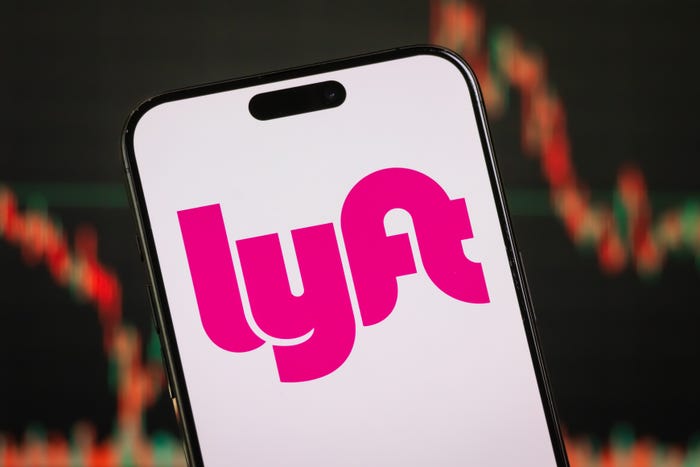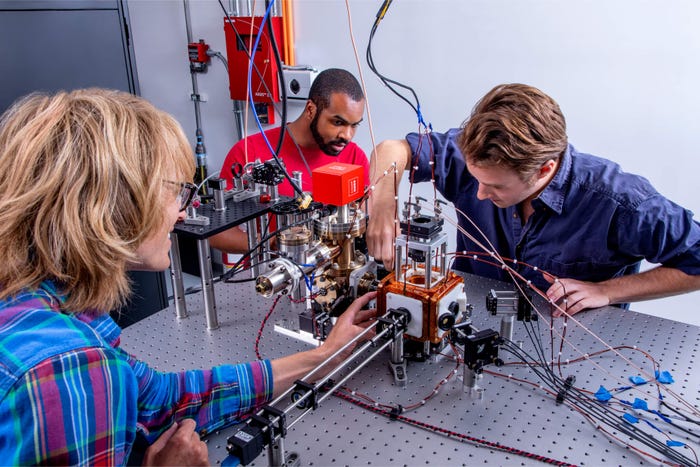The Rise of Business-Driven IoTThe Rise of Business-Driven IoT
There is considerable experimentation in the young Internet of Things space—much of it more whimsical than practical, say two executives at Bsquare. But the most promising applications are strictly business.
August 10, 2016

Here are some common assumptions about the Internet of Things. Everybody wants in on it and, in the negative column, security and privacy are a nightmare.
There are problems with those conclusions, according to Jerry Chase, CEO and Kevin Walsh, Vice President Marketing at Bsquare. Sure, the IoT field is trendy, but that isn't enough to entice most industrial companies to invest in it. “Our view is that nobody is buying IoT,” Chase says—or at least not the operations departments, P&L centers, and business unit managers at industrial firms that the company is targeting. He continues: “Instead they’re buying better business outcomes.”
Furthermore, while security and privacy are hurdles, most of Bsquare’s industrial clients view those items like a box to check off rather than huge concerns. “I don’t think too many of [our customers] are all that concerned about security. It’s an interest for IT teams, but they already use standard protocols,” Walsh says. “It is a pretty tightly controlled secure environment. I think a lot of the alarmism is in the consumer space.”
What keeps most operations people up at night is not IoT security but straightforward things such as solving business problems, fueling growth, and cutting waste. A big chunk of what the company does is to help companies improve what they were already doing. In some cases, they help them use technology to launch new business models,
Business over Platforms
Earlier this year, several journalists and investors asked Bsquare's executives if the company was planning on offering its DataV software stack as a platform. “In fact, we were challenged that we were not going to be viable in the space unless we offered a platform that could attract the development community,” Chase says. “We said: ‘gee, that is just not what we are seeing.’ First off, we have no objection to offering up DataV as a platform. None. We would be happy to do it, but there is no demand for it.”
There is no appetite because the company’s operations-based customers don’t have the resources or desire to develop software. “They don’t want to learn our business. They want to optimize their business,” Chase says. “So when you offer them a cloud-based solution with lots of APIs, it is just overwhelming for them,” he adds.
Walsh notes that the company often doesn’t discuss things like APIs and protocols with its customers. “If you are talking to operations people, their vocabulary is “uptime,” “reduced maintenance,” “reduced service cost,” or “reduced warranty costs.” “Fortunately, we are just at a stage in the development of industrial sector where it is operations that are leading it. They are the ones looking for an ROI,” Walsh says. “IT departments, in most companies, are not leading this charge.”
Nevertheless, Bsquare sees many companies implementing IoT technology simply because it seems like a good idea. “If you start off by saying: I want to implement an IoT solution, it is kind of like an experiment,” Chase says. “Operations people don’t have time for that.”
Turning Data into a Business Advantage
Bsquare's strategy has proven successful thus far. The company just signed a deal worth more than $4 million with a Fortune 500 company. 451 Research believes the company is one of the top five providers and that they were one of the top IoT companies in the marketplace. “We are feeling pretty good,” Chase says.
An example of how the company can help boost efficiency can be found in the trucking industry. “There is a great example of a targeted use case in the trucking industry where the primary goal is uptime,” Chase says. “If those wheels aren’t turning, those customers aren’t making money. There is a big opportunity cost if that truck is broken down by the side of the road or waiting to get into a repair bay.”
In this case, the company is taking data from the truck and processing it with its algorithms. Bsquare creates business rules with probabilities associated with them. “This allows the operations people to decide what they want to do when a business rule is triggered,” Chase explains. “Do they want an email sent? Do they want to query the driver? Or tell the driver to ignore the indicators because the warning isn’t that serious. Or do they want to route the truck to a repair center that is seven miles farther than the nearest one because that center has the time and the parts.”
Walsh says that he foresees the predominant use case for trucking and for consumer automobile industries being predictive reasoning. “You want to know two or three weeks ahead of time when something is going to go wrong,” he says. “It would be great if we could drive our car to the repair shop and they already knew what was wrong because they already were able to do the diagnostics and the analytics beforehand.” But a repair shop still diagnoses the problem after the vehicle arrives—oftentimes after hooking it up to a computer that is in the shop. “That is ridiculous. Obviously, for trucks, it is not only ridiculous but very expensive to do that. That is why you see big institutional heavy-duty trucking manufacturers implement this more quickly than consumer automobile manufacturers.”
IoT technology also can be used to reduce the trucking industry cut waste. “We discovered that the false positive rate for internal indicators on a truck is very high—it’s a double digit percentage. Reducing that figure could lead to enormous savings, Walsh says. “When a trucking company pulls a truck off the road, in addition to lost revenue, it cost more than one thousand dollars just to pull the vehicle into a service bay.”
Pitches like these are persuasive for industrial companies. “If I work at a company like this, and you have something that can help me with my business, I am interested,” Chase says. Once they hear the pitch, they tend to want to launch a proof of concept study to see how the technology can help address their challenges. In interactions like this, the nature of the interaction begins to change. “You go from being a technology vendor to being a trusted partner,” Chase says.
About the Author
You May Also Like






